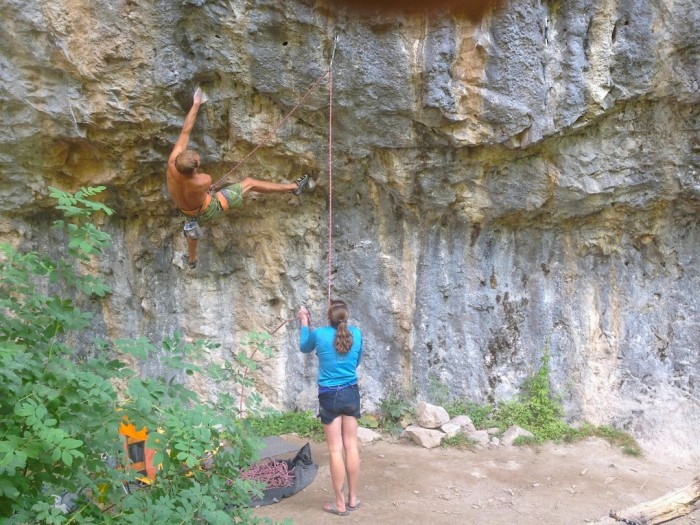So far we have talked about Threshold and Strong Start strategies as students enter and we begin class.
Now what? How do we get to the learning as fast, efficiently and respectfully as possible? My first year of teaching I realized quickly that I needed to find a way to get the students attention. I started flicking the lights on and off. It worked. But, I am not sure how I feel about it. I do know that since I wasn't a QL teacher yet, my overhead lights were always on, so flicking them "off" to get attention wasn't so bad. If I had continued that practice, (when I stopped using fluorescent lighting), that switching the lights "ON" to get their attention would of blinded the kids and would of seemed punishing. By the time I was using lighting purposely, I had developed a better plan. (thank goodness).
The Call to Attention...
Like I mentioned above, what you use to call the students to attention is not a punishment, but a classroom management technique that simplifies your ability to get kids attention in a positive way and teaches kids self-regulating behaviors and guides them to autonomy. (stay tuned for more on that in a minute).
There are lots of examples of Calls to Attention out there on the web and you may have one you like... Jessica Hedges simply says, "Hey" and the kids say "Ho", Emily Smith says, "Howdy" and the kids do the same. Some teachers do a narrating countdown, ("you are quiet in 5, pencils down in 4, eyes on me in three, etc.") or simply hold a hand for "5". The important thing to do is practice it a lot, and hold that 100% compliance is happening by scanning the room. If the kids know you are waiting and looking, it will be more effective.
 In my classroom, I used a modified rock climbing command protocol. I used the metaphor that I was their belayer, holding their rope and supporting them as they climbed 8th grade science. I believe they had more stock in saying it, since I took the time in a mini-lesson to explain what it meant to me and to them. It was an effective call to attention.
In my classroom, I used a modified rock climbing command protocol. I used the metaphor that I was their belayer, holding their rope and supporting them as they climbed 8th grade science. I believe they had more stock in saying it, since I took the time in a mini-lesson to explain what it meant to me and to them. It was an effective call to attention. Change Their State:
To increase my ability to train students to self-regulate and change their state, I combined my call to attention with a kinesthetic state change. I used SLANT first, which was started in KIPP schools, is used by Quantum Learning (where I learned it) and is mentioned in Doug Lemov's book, Teach Like a Champion. I later switched to PLAN which is from Doug Curry's How to Train a Llama. There is STAR too.
Here are the three that I have seen and used:
Sit up Sit up Posture (sit up)
Lean forward Track the speaker Lean, look and listen
Ask and answer questions Ask and answer questions All things put down
Nod your head Respect others No talking
Talk to your teacher
As you can see, they are more alike than they are different. I had success with SLANT and with PLAN. (the reason for my switch was my entire building used PLAN, no big deal)
So my call to attention looked, sounded and felt like this...
Me: "on belay"
Kids: "ready to climb",
Me: "climb on"
Kids: "climbing"
Me: "Show me your PLAN"
Kids: would sit up, lean forward, put pencils down, and look at me
Me: scan the room and make corrections and praise and praise and praise
This took practice, on my part to continue using it with fidelity and never getting upset when I had to use it. I was in control of the classroom behavior in a positive way. Remember, everytime I used it, I was telling them that I was sending a message that I was there for them, setting them up for success and they were climbing higher and higher!
I would also manage their behavior by calling to attention when I felt they were getting too loud... right as the volume would rise, I would call them back and either check for understanding or students could share their learning.
I also would go to the SAME spot in my classroom to call them to attention. By spring, I could walk to that spot and the volume would decrease automatically. That's self-regulation folks and sets up kids with feelings of satisfaction and autonomy.
Tips:
1. Keep it simple - don't choose something that will cost time or not be something you will hold on to...
2. Time is important and being quick is the goal... so don't hold kids 15 seconds longer than necessary just to prove you are in control...
3. Use the fewest words as possible. A call to attention means you don't have to say "shhh" or other words. It is all you say. Talking more steals away the satisfaction and autonomy students gain when they comply. We are training kids to self-regulate, they need to know what it feels like...
4. Practice with peers (this practice is called microteaching and doesn't it sound fancy?) your procedures to increase your economy of words. The goal... talk less.
Here's quick video for guidance.



